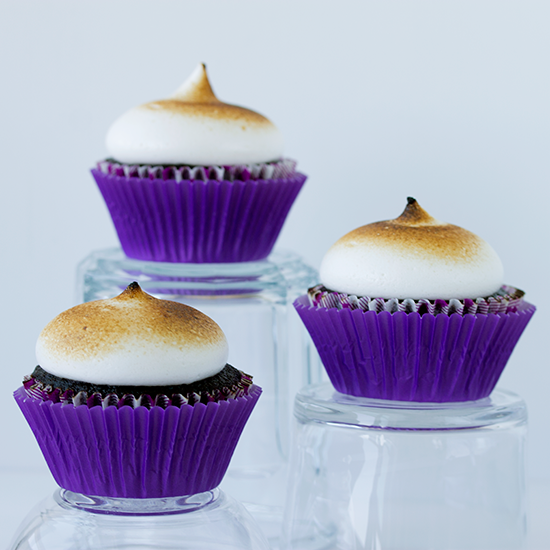Sorry for the delay in this challenge post, my kitchen was all in boxes from our move! Believe me when I say, this was worth the wait!
Fondant is a strange concept. When explaining what I was making to my friends and coworkers, they were all confused. They asked "What is fondant?" "Is it that stuff you peel off of wedding cakes?" "Why would I want to eat solid frosting?" Those who watch too much Food Network knew exactly what I was talking about, most were still confused until I brought in the goodies.
I'm sure you've all had an experience with fondant. Generally it covers wedding cakes and has a minimal amount of flavor. Mostly sugary, sweet, stretchy and tough, most people I see at weddings have removed the outer shell of the cake to eat the insides. So I wondered, does fondant have to taste so gross?
I looked through several of my cake cookbooks, searched the internet and read through old baking magazines until I found two different fondant recipes. Traditional fondant, made with gelatin and glycerin as additives, is pegged as the trickier version to make. Marshmallow fondant, made with marshmallows and powdered sugar, is billed as the "everymans" fondant recipe. I found this to be exactly the opposite.

I started the day with making the marshmallow fondant. The recipe calls for melting an entire bag of mini marshmallows in the microwave. Once the mini mallows are melted you pour in almost a whole 2 pound bag of powdered sugar and start mixing. Then comes the messy part, you have to knead all of the sugar into the marshmallows, by hand. Even with repeated greasing of my hands with shortening, I was a big mess. The fondant was sticking to everything it touched. It took a good fifteen minutes to incorporate all of the sugar into the marshmallow and form a smooth fondant. My arms were tired.
Once the marshmallow fondant was safely in a zip-top bag, I started with the traditional recipe. The most difficult thing required of me was to microwave some gelatin in water. The remainder of the hard work was complete by my stand mixer. Everything mixed together much more easily that in the marshmallow recipe and required only two minutes of hands on kneading to finish.
You might be wondering if there was a difference in the outcome of the two recipes. First, they both rolled and shaped easily. Other than a modest color difference (the traditional fondant was pure white, while the marshmallow fondant was slightly off-white), I found no physical difference in the recipes. The major difference came with the taste.
The marshmallow fondant tasted just like a marshmallow, like vanilla. I used this fondant to cover the cookies and they were a smash hit. People were raving about how good the fondant was and how delicious the cookies were (
Click here for the cookie recipe). The traditional fondant had the same texture, it was just almond-flavored (because I added almond extract). I enjoyed the fact that I could flavor the fondant with whatever extract or oil that I wanted. Imagine chocolate cake, covered in mint fondant or red velver cake covered in cheesecake flavored fondant. So many possibilities!
In the end, I think that I preferred the traditional fondant recipe for two reasons. 1. The ease of preparation. This fondant came together so much quicker and cleaner than the marshmallow fondant. 2. The flavor. Being able to add different flavors to the fondant open up a whole world of possibilites.
I don't think that I will be buying prepared fondant in the future. Comparing all three recipes, the store-bought stuff comes out as a definite loser.





















































